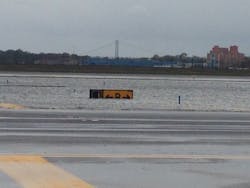If you lived through or still are living through the effects of Hurricane Sandy, you know that many disaster recovery plans failed for the simple reason that they did not adequately consider the worst case scenarios that actually developed.
So while the weather people did a very good job of predicting the confluence of at least two major storm systems and the potential storm surges, many major institutions were still apparently caught short when water flooded out their basements and first floors where emergency generators were located.
The extent of gas shortages in the New York and New Jersey area has brought rationing back for the first time in more than three decades. There’s enough finger-pointing to go around about who is to blame for the slowness of the recovery in some areas. Rather, the point of this blog is to have GSE operators around the world think about what lessons can be learned from the hurricane's aftermath. And whether their disaster recovery plans be improved upon in light of what occurred in the Northeast United States.
For example, how did electric GSE fare the storm compared to diesel-fueled? Looking at the tire-high water at LaGuardia made me wonder whether one was better able to handle the water surge than the other. I would certainly welcome feedback from operators who experienced the surge.
About the Author

John Goglia
John Goglia has 40+ years experience in the aviation industry. He was the first NTSB member to hold an FAA aircraft mechanic's certificate. He can be reached at [email protected].
John Goglia is an independent aviation safety consultant and Adjunct Professor at Vaughn College of Aeronautics and Technology and regular monthly columnist for four aviation trade publications. He was an airline mechanic for more than 30 years. He has co-authored two text books (Safety Management Systems in Aviation, Ashgate Publishing 2009 and Implementation of Safety Management Systems in Aviation, Ashgate Publishing 2011).
